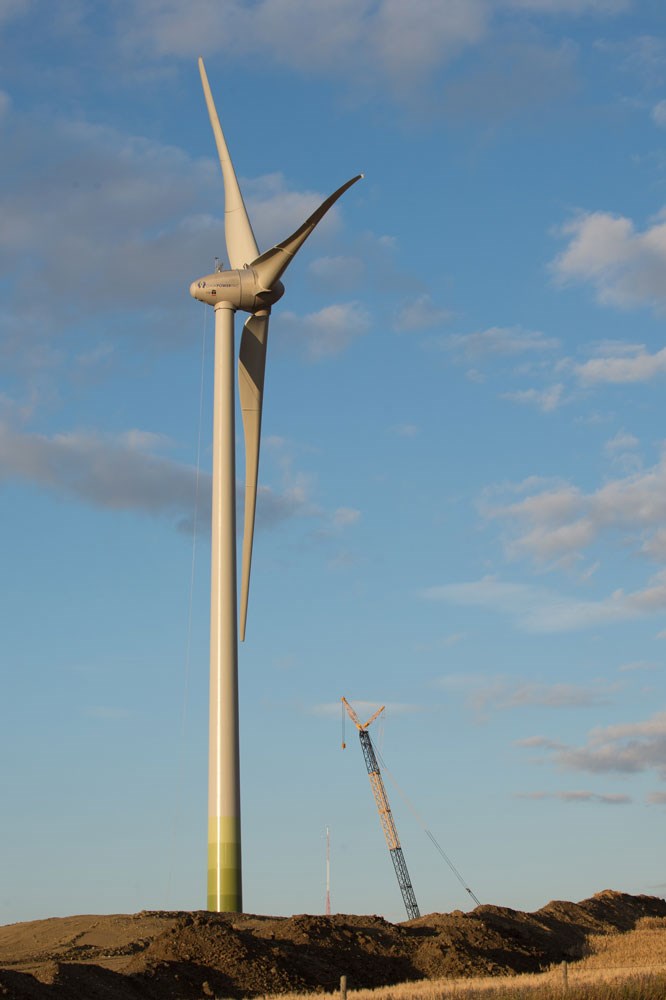Of all the industrial sectors in Saskatchewan, oil and gas are targeted for the highest cuts in greenhouse gas emissions.
That’s according to Energy and Resources Minister Dustin Duncan, who released the government’s climate change plan in Moose Jaw on Aug. 29. Representatives of the largest industrial companies in the province, including Mosaic Potash and Crescent Point Energy Corp. were in attendance and are apparently on board.
The plan is the next step in carrying out the “Prairie Resilience” strategy which was released in December 2017.
The press release indicated, “The government of Saskatchewan continues to implement key commitments made in the province’s climate change plan to help reduce greenhouse gas (GHG) emissions and maintain a competitive economy.”
It noted that as part of the made-in-Saskatchewan Prairie Resilience strategy, government has developed new output-based performance standards that will apply to more than 40 Saskatchewan industrial facilities. These facilities generate 11 per cent (or approximately 8.5 million tonnes) of total provincial emissions and are expected to reduce that portion by a total of 10 per cent by 2030. These measures are in addition to previously announced reductions in electricity generation (40 per cent) and methane from upstream oil and gas (40 per cent).
“Reductions in these three key areas will reduce emissions by 12 megatonnes of greenhouse gases each year by 2030,” Environment Minister Dustin Duncan said. “Our bold and innovative system-wide strategy is designed to responsibly and tangibly reduce emissions without the imposition of an economy-wide carbon tax.”
Saskatchewan’s performance standards will increase over an established schedule from 2019 to 2030, cumulatively reducing GHG emissions by 5.3 million tonnes. The sector-specific performance standards are expected to achieve the following emissions intensity reductions:
• Potash, coal and uranium mining (5 per cent)
• Iron and steel mills (5 per cent)
• Fertilizer manufacturing (5 per cent)
• Pulp mills (5 per cent)
• Ethanol production (5 per cent)
• Refining and upgrading (10 per cent)
• Upstream oil and gas – combustion only (15 per cent)
Saskatchewan facilities will be able to choose from a suite of flexible compliance options including offset credits, best performance credits and a technology fund.
The government said Prairie Resilience is designed to protect economic competitiveness while achieving cumulative greenhouse gas reductions by 2030. The standards for these sectors were developed in consultation with industry and account for overall economic growth, competitiveness and trade exposure, minimal regulatory burden, and sector-specific achievability.
During the announcement, Duncan made clear that the government of Saskatchewan has no time for the federal government’s plan for a carbon tax, or its plan to impose a “backstop” carbon tax if they don’t like what Saskatchewan is proposing. He said Saskatchewan will be implementing this Prairie Resilience plan regardless of a federal government review or backstop.
Duncan pointed out that the federal deadline for a plan was Sept. 1. Saskatchewan is not submitting its plan for assessment, he noted, saying the province does not believe the federal government has the constitutional ability to impose the backstop.
“Our approach with Prairie Resilience is a more effective plan than a carbon tax, and these commitments demonstrate why the federal backstop should not be imposed on Saskatchewan businesses, industries, communities and families,” Duncan said in the release. “We plan to advise the federal government of our progress on reducing emissions and building a more resilient province; however, we are not submitting our plan for assessment, nor are we changing course on our strong and effective approach on climate change.”
“We are pleased to work with the government on this proactive, made-in-Saskatchewan approach to climate change to ensure emissions are reduced in an efficient manner that fosters innovation and ensures the province remains competitive,” said Patrick McDonald said, director of climate with the Canadian Association of Petroleum Producers (CAPP).
“Ensuring the mining sector remains globally competitive is vitally important to Saskatchewan and to Canada as a whole,” Saskatchewan Mining Association vice president environment, safety and regulatory affairs Brad Sigurdson said. “We need to be mindful that, as we work to reduce GHG emissions, mining investments and jobs are not С����Ƶ directed to other international jurisdictions that don’t have the robust environment and safety regulatory framework that exists in Saskatchewan and Canada. Our members are committed to bringing our expertise to the table and working with the province to reduce GHG emissions from the mining sector.”
In addition, The Management and Reduction of Greenhouse Gases (Reporting and General) Regulations take effect September 1, 2018. The regulations obligate any provincial facility that emits more than 10,000 tonnes per year to report those emissions.
The Prairie Resilience strategy is a system-wide approach that includes more than 40 commitments designed to make Saskatchewan more resilient to the effects of a changing climate. The commitments – which go beyond emissions reductions alone – span Saskatchewan’s natural systems and resources, infrastructure for electricity, transportation, homes and buildings, and community preparedness.




